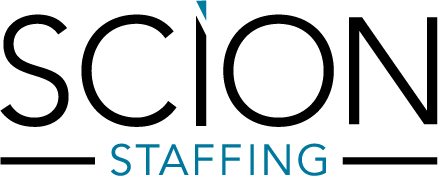
07 May The Role of Technology in Modern Recruiting
Attracting and retaining top talent is critical for success, especially in today’s competitive market. Finding reliable and experienced employees isn’t easy. Before serious advances in technology, the staffing industry and talent recruiting relied on manual work and limited reach. However, the digital revolution has brought a wave of innovative technologies that are dramatically reshaping the way organizations identify, engage, and hire qualified candidates in their recruitment process. In this blog, we’ll dives into the significant role technology plays in modern recruiting, highlighting its impact on efficiency, candidate experience, and the overall talent acquisition process in today’s recruitment landscape.
The Evolution of Recruiting Practices: From Paper to Pixels
Traditionally, talent recruitment relied heavily on manual processes. Job postings were circulated through physical newspapers and job boards, resumes were meticulously screened by hand, and interviews were conducted in-person. This approach, while functional, often resulted in:
- Limited Reach: Job postings were restricted to a localized audience, potentially missing qualified candidates outside the immediate area.
- Time-Consuming Processes: Manually screening resumes and scheduling interviews was a slow and laborious task, hindering the hiring process.
- Subjectivity in Selection: Biases and personal preferences could influence hiring decisions, leading to potential talent being overlooked.
The integration of technology into recruiting practices has dramatically altered the entire landscape. Starting with the emergence of online job boards in the late 1990s, the internet revolutionized the way talent is sourced and connected with opportunities. Today, a timeline of key technological advancements paints a clear picture of its transformative impact:
- Early 2000s: Applicant Tracking Systems (ATS) emerged, streamlining resume management and automating initial screening processes.
- Mid-2000s: Social media platforms like LinkedIn became powerful tools for talent acquisition, allowing for targeted outreach and candidate engagement.
- Late 2010s: Cloud-based HR software and mobile applications further enhanced accessibility and communication during the hiring process.
- 2020s and Beyond: Artificial Intelligence (AI) and machine learning are now being integrated into recruiting, facilitating data-driven decision-making and personalized candidate experiences.
This technological evolution has significantly improved the efficiency of the hiring process, enabling businesses to:
- Reach a Wider Talent Pool: Online platforms and social media allow for global talent sourcing, expanding the potential candidate pool beyond geographical limitations.
- Reduce Time-to-Hire: Automated screening and scheduling tools expedite the hiring process, allowing for faster identification and onboarding of qualified individuals.
- Objectify Candidate Selection: Data-driven algorithms and AI-powered assessments help minimize biases and ensure fair and consistent talent evaluation.
Defining Modern Recruiting Technology: Tools for a Digital Age
Modern recruitment technology encompasses a wide range of tools and software designed to streamline the recruitment and management of temporary and permanent personnel. Some of the key elements include:
Applicant Tracking Systems (ATS)
These platforms manage the entire application lifecycle, from resume collection to initial screening and communication with candidates. Utilizing an ATS can improve organization and efficiency in managing large applicant pools.
Customer Relationship Management (CRM) Systems
When integrated with ATS, CRMs allow for targeted talent acquisition strategies and personalized communication with potential candidates.
AI and Recruiting Software
AI algorithms are increasingly being used to perform sophisticated analyses of resumes. They are designed to go beyond simple keyword matching by understanding context and learning what makes a candidate suitable for a particular role. AI screening tools take a smarter approach by evaluating qualifications, skills, and other relevant data to shortlist candidates efficiently.
Video Conferencing Tools
Platforms like Zoom, Skype, Microsoft Teams, and Google Meet enable remote interviews and virtual onboarding, facilitating the hiring process regardless of geographical location. These tools offer greater flexibility and accessibility for both candidates and hiring managers.
How Technology is Shaping Recruitment Strategies: From Sourcing to Selection
Technology has fundamentally altered the way talent is sourced and recruited, offering a wider reach, deeper insights, and a more personalized approach.
Sourcing Candidates: Expanding the Talent Pool Beyond Borders
Social media platforms like LinkedIn have become powerful talent magnets. Recruiters can leverage targeted advertising and group searches to reach niche skillsets and passive candidates who may not be actively seeking new opportunities. This allows them to build a diverse talent pool that transcends geographical limitations and traditional job boards.
The Rise of Big Data: Unveiling Hidden Talent Trends
Analytics tools and software are now adept at analyzing vast datasets of candidate profiles, skills, and job market trends. This allows recruiters to identify emerging talent pools with specific skillsets or qualifications that may not be readily apparent through traditional methods. By understanding the broader talent landscape, they can make data-driven decisions about where to focus their sourcing efforts and attract the most relevant candidates.
Personalization: Tailoring the Candidate Journey
AI-powered software is revolutionizing how companies engage with potential candidates. By analyzing resumes, online profiles, and social media activity, these tools can personalize outreach messages based on individual skills, interests, and career aspirations. This fosters a more meaningful connection with candidates, increases engagement, and ultimately improves the overall candidate experience as well as enhances the employer branding of the organization.
Technology and the Hiring Process: From Resumes to Onboarding
Technology has revolutionized the way companies hire, streamlining processes, enhancing candidate assessments, and facilitating a more efficient and objective selection process. In this section, we’ll look at how technology can impact each stage of the hiring process.
Automated Resume Screening: Efficiency and Bias Reduction
ATS platforms have become the cornerstone of modern resume screening. Utilizing keyword searches and algorithms, they can automatically scan through large volumes of resumes, identifying candidates with the desired skills and qualifications. This not only saves recruiters valuable time but also reduces the potential for human bias in the initial screening process.
Initial Candidate Assessments: Beyond the Resume
AI-powered tools are now capable of conducting comprehensive candidate assessments that go beyond traditional resumes. These tools include:
- Cognitive Ability Tests: Assess problem-solving skills, critical thinking, and cognitive function through online tests and simulations.
- Personality Assessments: Analyze personality traits and cultural fit based on questionnaires and language analysis, ensuring candidates align with the company’s values and team dynamics.
- Skills-Based Assessments: Evaluate specific skills through gamified tests and simulations, providing a more accurate picture of a candidate’s practical abilities.
These assessments provide valuable insights that complement traditional resumes, helping to identify hidden gems and ensuring a more holistic evaluation of candidates.
Remote Interviewing: Expanding the Talent Pool and Flexibility
Video conferencing and remote interviews with job seekers have transformed the way many organizations conduct their interviews. This allows employers to connect with talent all over the world and interview candidates regardless of their location, expanding the talent pool well beyond geographical limitations. They’re able to conduct interviews at convenient times for both parties, accommodating different time zones and schedules for candidates who may need that additional schedule flexibility. This also helps reduce costs like travel expenses associated with in-person interviews, making the hiring process more cost-effective.
Common Questions and Misconceptions: Addressing Concerns about the Human Element
The integration of technology in recruiting often leads to concerns about the “dehumanization” of modern recruiting. However, it’s important to understand that technology is not meant to replace human interaction or employees as a whole, but rather to augment it. Here are some of the common misconceptions and questions around this:
Technology Eliminates Tedious Tasks
By automating repetitive tasks like resume screening and scheduling, technology frees up time for recruiters to focus on building relationships with candidates and conducting in-depth interviews.
Human Expertise Remains a Necessity
Hiring managers and recruiters still play a vital role in assessing cultural fit, evaluating soft skills, and making final hiring decisions.
Technology Ensures Fair and Objective Selection
AI-powered tools can help minimize bias and ensure a more objective evaluation of candidate qualifications, but they’re still not perfect and AI bias is still relevant in recruitment. Use tools that help limit bias as much as possible.
Future Trends in Recruiting Technology: Embracing the Digital Transformation
The future of recruiting technology is brimming with potential, promising even more sophisticated tools and solutions to revolutionize the way we attract, assess, and manage talent. There are some amazing and exciting advancements that are on the horizon!
Advanced AI and Machine Learning: Unveiling Hidden Talent and Predicting Success
AI algorithms are poised to become even more powerful, further automating tasks and providing deeper insights into the talent pool. AI will go beyond simple keyword matching, analyzing vast datasets of candidate profiles, skills, and career trajectories to identify the perfect fit for specific roles and the organization itself. It will also be able to analyze past hiring data and identify patterns to predict candidate success and retention potential, allowing for more strategic talent acquisition decisions. Micro-skills assessments will delve deeper into specific skills and abilities, utilizing simulations and gamified tests to provide a more nuanced understanding of a candidate’s capabilities.
Virtual Reality and Augmented Reality: Immersive Experiences for Recruitment and Onboarding
Virtual reality (VR) and augmented reality (AR) technologies are poised to transform the way we interact with potential hires. Imagine conducting interviews in virtual environments that simulate real-world scenarios, allowing candidates to showcase their skills and problem-solving abilities in a more interactive setting. AR technology could overlay digital information onto the physical work environment, providing new hires with real-time training and guidance as they navigate their roles. VR experiences could showcase an organization’s mission and values, as well as their work environment, allowing candidates to get a realistic feel for the organization before joining.
Blockchain Technology: Secure and Transparent Talent Management
Blockchain technology, known for its secure and transparent data management, has the potential to revolutionize talent management. Blockchain can securely store and verify educational credentials, work history, and skills certifications, eliminating the risk of fraud and ensuring authenticity. Automated contracts could streamline the hiring process, managing tasks like payroll, benefits, and contract terms with greater efficiency and transparency. Blockchain-based platforms could also create secure and transparent talent marketplaces, facilitating the exchange of skills and expertise across industries.
Technology – A Catalyst for Modern Recruitment Success
Technology has undeniably transformed the talent landscape, offering a plethora of tools and solutions to optimize the recruitment and management of both temporary and permanent staff. From sourcing candidates to onboarding new hires, technology streamlines processes, reduces bias, and enhances the overall experience for both businesses and individuals.
As we move forward, embracing technological advancements will be important for businesses to stay ahead of the curve and compete effectively in the dynamic talent market. At Scion Staffing, we are committed to providing our clients with access to the latest technology and expertise in talent acquisition. We believe that by leveraging the power of technology in modern recruiting, we can help businesses build high-performing teams and achieve their strategic goals.
If you are interested in exploring how technology can transform your recruiting processes or seeking expert advice on building a successful workforce, we encourage you to contact our experienced team today. Let us partner with you to navigate the evolving world of recruiting and unlock the full potential of your recruiting strategies.
About the Author
Patrick Chiotti (he/him) is an accomplished SEO writer and is currently the Marketing and Communications Specialist at Scion Staffing, bringing years of experience in SEO knowledge and a passion for writing to the Scion team. With additional experience in customer service roles, retail, and accounting, Patrick brings a unique set of knowledge and skills to his role while sharing the passion to continue learning about a wide range of topics so he can share his voice to a larger audience. Outside of Scion, Patrick spends his time as a football coach at the high school level and is passionate about teaching the game, while remaining a student to it. He is also a husband and father, and enjoys fitness, as well as a passion for cooking amazing food.



